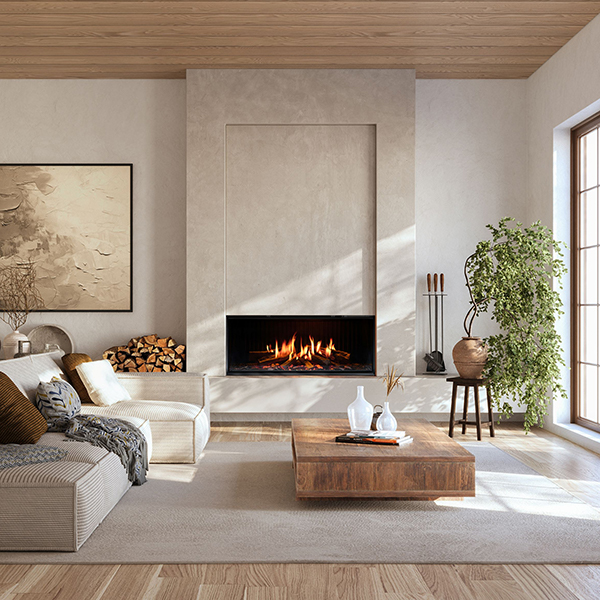A recent industry roundtable hosted by netMAGmedia brought together leading voices from the solid fuel, biomass, and construction sectors to explore how secondary heating systems can play a vital role in the UK’s new-build homes of the future.
Solid Fuel Heating Confirmed for the Future Homes Standard
Following confirmation from the UK Government that the Future Homes Standard will permit solid fuel heating systems, including wood-burning stoves and pellet appliances, the discussion centred on how the industry can collaborate with housebuilders and homeowners to deliver practical, low-carbon, and future-proof heating solutions.

Industry Leaders Unite for a Low-Carbon Future
The event, held at the Institute of Directors in London, gathered key industry representatives, including:
- Danielle Michalska (Taylor Wimpey)
- Jason Harries (Woodsure)
- Erica Malkin and James Verlaque (Stove Industry Association)
- Dennis Milligan (British Flue & Chimney Manufacturers Association)
- Ruoyang Yuan (Supergen Bioenergy Hub)
- Stew Horne (Energy Saving Trust)
- Naomi Sadler (SEEs Ltd)
- Neil Holland (UK Pellet Council)
Their combined expertise ensured a well-rounded debate on the role of solid fuel heating in sustainable housing design. The event, supported by Percy Doughty, Charlton & Jenrick, and Jøtul UK, showcased how industry collaboration is key to achieving practical low-carbon heating for the UK’s housing future.
Building ‘Stove-Ready’ New Builds for Flexibility and Comfort
A standout topic from the discussion was the idea of “stove-ready” new-build homes — properties designed with built-in infrastructure to accommodate secondary heating options such as wood-burning stoves, pellet systems, or biofuel appliances.
Calvin May, Head of Technical Services at HETAS, explained how stove-ready design can future-proof homes:
“By making new-build homes ‘stove-ready’, we can give homeowners genuine flexibility.
If a heat pump doesn’t quite meet a household’s needs, they can safely add a supplementary heating system without costly or disruptive retrofits.”
These homes would include essential components such as a Class 1 chimney, functional hearth, and direct air supply, ensuring compatibility with modern airtight building standards.
Secondary heating that doesn’t compromise airtightness
Airtightness in new-build homes is a requirement outlined in Approved Document L, and something that will save homeowners money on their energy bills as their house keeps heat in for longer.
Installing a solid fuel appliance requires a healthy supply of air – something that cannot be achieved without disrupting the airtightness of a home. Only 20% of new-build properties have modern MVHR systems which allow for a ‘fireplace mode’, counteracting this issue – the remaining 80% have much more limited options. This is where a ‘stove-ready’ house with provision for a direct air kit comes into play. Instead of a HETAS Registered Installer having to core a hole in the wall and impact the homes airtightness properties during installation, a direct air kit enables a simple, almost ‘plug and play’ option.
This means homeowners who are looking for a sustainable secondary source of heat won’t need to understand the complexities behind airtightness and solid fuel appliance ventilation requirements; they can instead contact their local installer and be confident their home will maintain its heat-retaining capabilities.
Calvin May commented:
“The last thing we want is homeowners unknowingly compromising their home’s capacity to retain heat. A ‘stove-ready’ new build will ensure this doesn’t happen – and won’t require advanced knowledge from households.
“This is one of the many ways we can work together with the construction industry to support homeowners in their heating choices, giving them confidence and assurance that they have flexibility with their heating solutions.”
Complementing heat pumps, not competing
The Future Homes Standard and the government’s Boiler Upgrade Scheme (BUS) are driving the adoption of heat pumps as a primary, low-carbon heating solution in new builds. However, each household has different heating needs. Participants at the roundtable recognised these, drawing on their expertise in construction, heating, manufacturing, and compliance to recognise that heat pumps may not deliver the level of warmth of responsiveness that some households expect. This is especially relevant during cold snaps as climate change causes more extreme weather patterns or for households in off-grid, rural locations.
Rather than positioning solid fuel as a rival to heat pumps, the roundtable of industry experts agreed that a ‘stove-ready’ approach for houses is a way for stoves to complement the low-carbon technology where required. By designing and building homes to accommodate both heat pumps and various other supplementary heating technologies (in compliance rather than merely aesthetics), housebuilders can offer prospective buyers the assurance that their heating needs can be met – whatever the circumstances.
Looking ahead: shared goals
Such an agreement would not come without challenges, however. Attendees at the roundtable shared the sentiment that this would require upskilling from housebuilders and open collaboration between organisations from both sectors to ensure safety and compliance are at the heart of builds.
This roundtable highlighted the value of ongoing, cross-sector dialogue and the opportunities that shared learning offers. As the UK moves towards a low-carbon future, experts agree that there is no one-size-fits-all solution for domestic heating. HETAS is committed to leading the way in best practice, technical guidance, and compliance, ensuring homeowners and housebuilders alike can make informed, future-proof choices.
Part of this commitment comes from the belief that collaboration creates a cohesive industry, and the optimism that the event closed with reiterates this. By working together, the solid fuel industry can ensure new homes are not only compliant, but are also flexible, comfortable, and ready for whatever the future holds.




